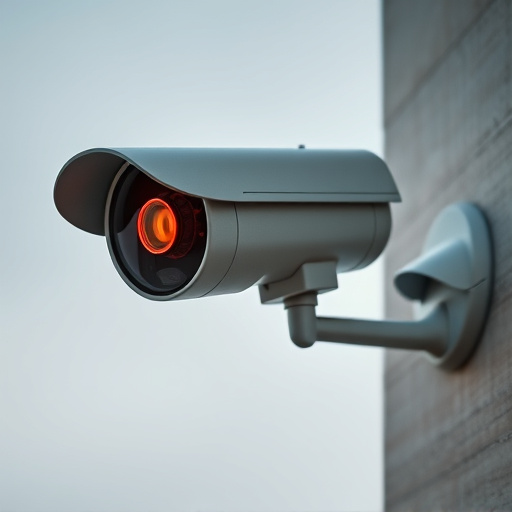Fake Security Camera Mounting Brackets are strategic components enhancing real security by creating a 24/7 surveillance appearance, deterring criminals through psychological intimidation. Selecting and deploying these brackets requires considering camera type, field of view, environmental conditions, and legal/ethical guidelines for optimal placement, versatility, realistic appearance, motion activation, high-definition resolution, and weatherproofing. Blending seamlessly into infrastructure with discreet positioning at natural line of sight levels ensures maximum deterrence without infringing civil liberties. Regular maintenance is crucial for continued effectiveness.
In today’s digital era, fake security camera placement strategies have become a critical component of home and business safety. This comprehensive guide explores the art of using fake security camera mounting brackets to enhance security while maintaining a discreet appearance. We delve into the psychology behind effective camera placement, technical considerations for optimal coverage, legal and ethical guidelines, and best practices for secure installations.
- Understanding Fake Security Camera Mounting Brackets
- The Psychology Behind Effective Camera Placement
- Technical Considerations for Optimal Coverage
- Legal and Ethical Guidelines to Follow
- Best Practices for Maintaining Discreet and Secure Installations
Understanding Fake Security Camera Mounting Brackets
Fake Security Camera Mounting Brackets are an essential component in designing an effective security system. These brackets serve as the foundation for installing security cameras, ensuring they are strategically placed to maximize coverage and deter potential intruders. Understanding their purpose and proper utilization is crucial for any comprehensive security strategy.
When selecting or designing mounting brackets, consider factors like camera type, desired field of view, and environmental conditions. The right bracket should provide stability, allowing for adjustable positioning while withstanding outdoor elements. By integrating Fake Security Camera Mounting Brackets into your security infrastructure, you create an appearance of 24/7 surveillance, potentially deterring criminal activity and enhancing overall safety.
The Psychology Behind Effective Camera Placement
The placement of security cameras is a strategic art, and understanding human behavior can significantly enhance their effectiveness. When it comes to fake security camera mounting brackets, the psychological aspect plays a pivotal role in deterring potential criminals. Criminals are more likely to avoid areas where they believe surveillance is present, even if those cameras might be fakes.
The mere visual cue of security cameras can act as a powerful deterrent, prompting individuals to behave differently. By strategically placing fake cameras in visible locations, businesses and homeowners can create the illusion of heightened security. This psychological effect is particularly useful in deterring opportunistic criminals who may be scanning for easy targets. The use of realistic-looking fake security camera mounting brackets contributes to this deception, making it harder for intruders to identify genuine surveillance equipment.
Technical Considerations for Optimal Coverage
When planning a fake security camera placement strategy, one must consider various technical aspects to achieve optimal coverage. The selection of suitable fake security camera mounting brackets is paramount. These brackets should be designed to offer versatile placement options while maintaining a realistic appearance. For instance, adjustable brackets that can angle and tilt the camera allow for a more comprehensive view of an area, capturing blind spots that genuine security cameras might miss.
Additionally, integrating motion-activated sensors with these fake cameras enhances their effectiveness. These sensors trigger the camera to record only when movement is detected, optimizing storage space and ensuring that footage is relevant. High-definition (HD) resolution should be a standard feature in these cameras to capture clear images, facilitating accurate identification. Furthermore, weatherproofing is crucial for outdoor placements, protecting the equipment from various elements while maintaining optimal performance.
Legal and Ethical Guidelines to Follow
When deploying fake security camera mounting brackets, it’s crucial to adhere to legal and ethical guidelines to avoid potential issues. Many regions have specific laws governing surveillance equipment placement, including restrictions on where cameras can be installed and who has access to the footage. For instance, in many jurisdictions, there must be clear notice that a property is under surveillance, respecting privacy rights of individuals both inside and outside the premises.
Ethical considerations also play a significant role. While fake cameras can deter crime, their placement should not create a false sense of security or infringe upon personal spaces. It’s essential to use these devices responsibly, focusing on high-risk areas accessible to the public while avoiding private spaces like bathrooms, bedrooms, or other areas where individuals expect reasonable privacy. Following legal and ethical guidelines ensures that fake security camera mounting brackets are used effectively without infringing upon civil liberties.
Best Practices for Maintaining Discreet and Secure Installations
When deploying fake security camera mounting brackets, discretion is key. Best practices involve integrating them seamlessly into existing infrastructure, ensuring they blend in with the environment. This often means using materials and finishes that match surrounding structures, such as outdoor-grade plastic or metal that resembles real camera hardware. Mounting them at eye level or slightly elevated positions helps maintain a natural line of sight while minimizing their visual impact.
Regular maintenance is equally crucial for secure installations. Regularly inspect brackets for signs of damage or wear, and replace any faulty components promptly. Cleaning the cameras and brackets to prevent dust and debris buildup also enhances visibility and performance. Additionally, keep the area around the cameras well-lit and free from obstructions to ensure optimal video quality and deter potential intruders.
In conclusion, mastering fake security camera mounting brackets involves a strategic blend of psychological insights, technical precision, legal awareness, and discreet installation practices. By understanding the psychology behind effective placement, adhering to technical considerations for optimal coverage, staying within legal and ethical guidelines, and implementing best practices for maintenance, you can create a robust security system that both deters crime and maintains privacy. Remember, the key to success lies in balancing visible deterrence with subtle integration into your environment.
